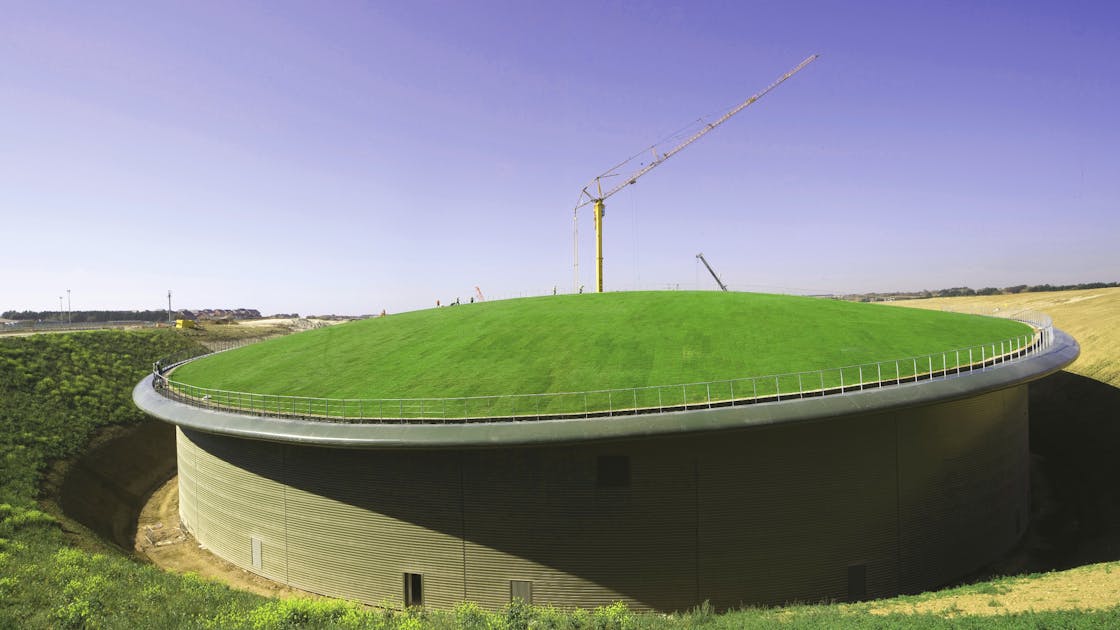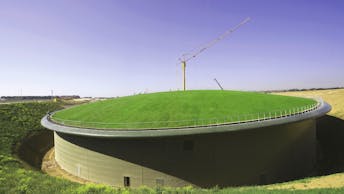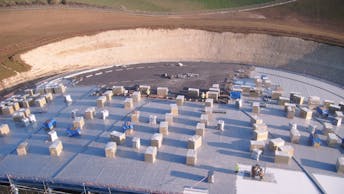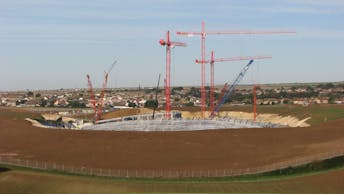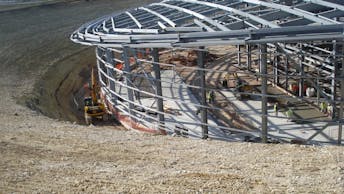The project
The purpose of Southern Water’s £300 million environmental improvement scheme is to treat 95 million litres of wastewater a day.
Part of the scheme, the Peacehaven Wastewater Treatment Works was to feature a grassy roof expanse, concealing the various buildings underneath and enabling them to blend into the rolling hills surrounding the site.
The challenge
Creating the curvaceous profile and cantilevered construction of the 17,800m2 green roof was fundamental to the project’s success.
As well as being sympathetic to the landscape, the grass-covering would enhance the site's biodiversity by providing a habitat for downland plant species and creating a secure environment for nesting birds. It also needed to attenuate rainwater run-off and offer thermal insulation.
The solution
The sustainable roof construction comprised a warm flat roof system that utilises the ROCKWOOL 85mm HardRock® Dual Density range of tissue faced insulated roofing boards.
These feature a high density top layer with point load compressive resistance and provide a non-combustible, acoustic and thermal insulation solution, which is compatible with Alumasc's Derbigum Anti-Root, waterproofing membrane. A green roof system was installed on top of the waterproofing.
The result
The end result was a roof constructed using a profiled metal deck, supported on purlins and covered with a vapour control layer.
In addition to roof insulation, ROCKWOOL products were also used in the construction of the scheme's walls. These are constructed from green-coloured, ribbed metal cladding, designed to blend with the surrounding landscape. A flexible mat of ROCKWOOL Cladding Roll was used in the wall to satisfy the designer's thermal, fire and acoustic requirements.
Peacehaven Wastewater Treatment Works
Peacehaven
BN10 8GN



